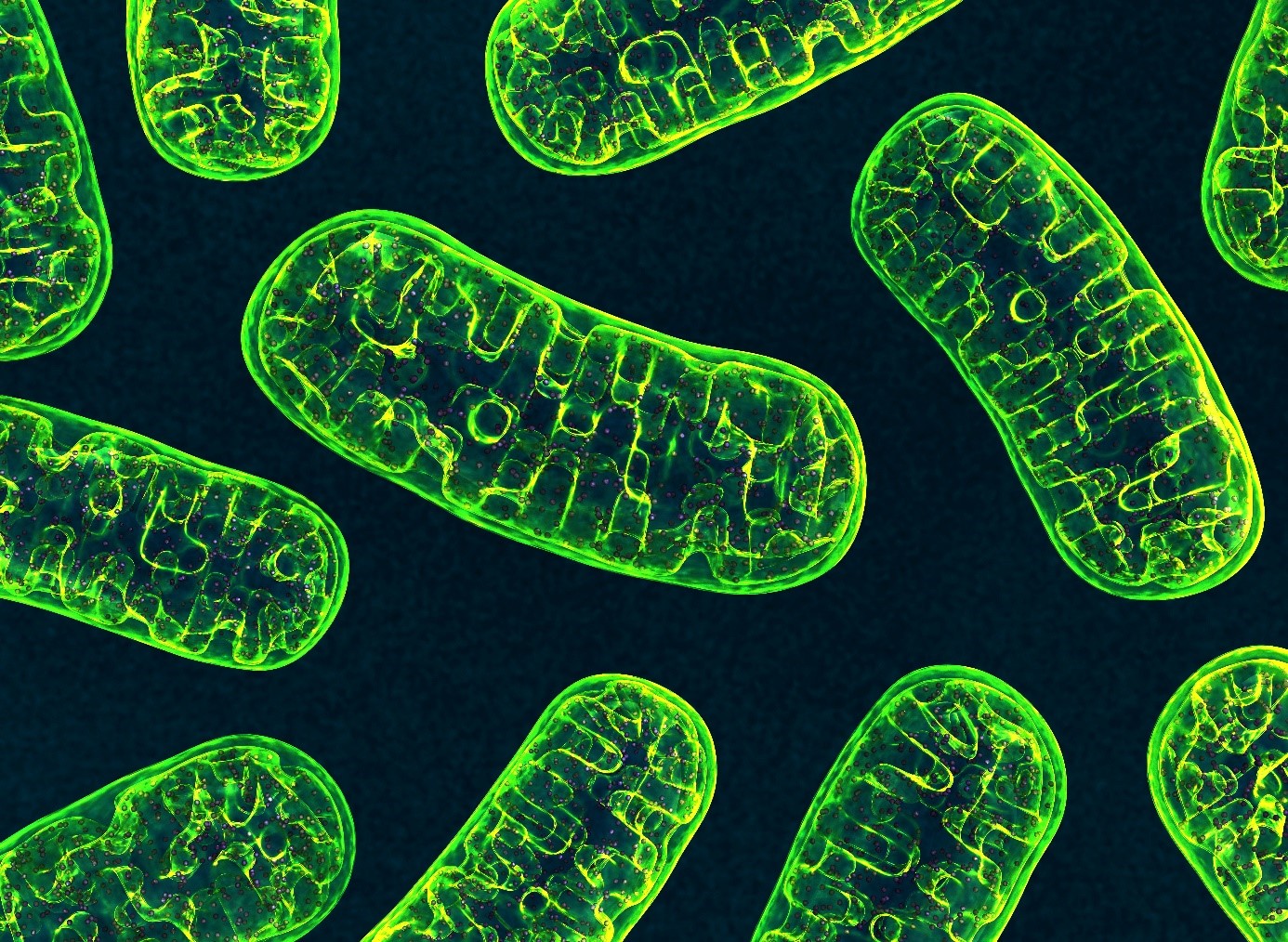Researcher Contact
Jean-Emmanual Sarry
Chercheur Inserm
Centre de Recherches en Cancérologie de Toulouse
e-mail : rf.mresni@yrras.leunamme-naej
Téléphone sur demande

The patients who best respond to the dual therapy in this study have a “Mitoscore signature” associated with strong mitochondrial activity. © Adobe Stock
While the care and treatment of acute myeloid leukemia (AML) have greatly improved in recent years, overall survival remains low. Resistance to the various treatments continues to present a major clinical challenge. Using animal models, and also by working with patients themselves, scientists from Inserm, CNRS and Université Toulouse III – Paul Sabatier at the Cancer Research Center of Toulouse have identified a new biomarker predictive of response to dual therapy (chemotherapy plus targeted therapy) used in AML, as well as resistance mechanisms behind relapses. The findings of this research have been published in Nature Cancer.
Leukemia groups several types of blood cancer that affect nearly 10,000 people each year in France. These include acute myeloid leukemia (AML), which affects the hematopoietic cells[1] in the bone marrow.
For a long time, intensive chemotherapy has been the treatment of choice for patients. Although the majority respond favorably and go into remission, overall survival in the longer term remains low, with certain resistant cancer cells persisting in the body following chemotherapy and leading to relapse.
In recent years, the development of targeted therapies has improved the treatment and response of patients, prolonging survival a little – particularly in elderly people ineligible for chemotherapy. However, even with these therapies, relapse remains a major issue. Understanding the mechanisms underlying resistance to leukemia treatments and finding a way to resolve them are a central focus of the work of Inserm researcher Jean-Emmanuel Sarry and his team at the Cancer Research Center of Toulouse (Inserm/CNRS/Université de Toulouse III – Paul Sabatier).
While most scientists working on the subject are more interested in the genetic mechanisms associated with resistance, Sarry’s team is studying the non-genetic mechanisms in order to understand why some patients are more likely to relapse.
Using patient transcriptomes (i.e. all messenger RNA derived from genome expression), they show that people who respond best to the dual therapy and who have prolonged survival have a specific biomarker – a “Mitoscore signature” – that is associated with a high level of mitochondrial activity[2]. “In other words, this strong Mitoscore signature, which reflects a high level of mitochondrial activity, is predictive of an improved response to these treatments,” explains Sarry.
Finally, thanks to single-cell sequencing[3]of residual disease[4] following this dual therapy, the researchers observed a particular remodeling of mitochondrial function allowing cancer cells to adapt to therapies and induce the patient’s relapse. In mice, the team also showed that treatment based on a molecule that inhibits the action of the mitochondria makes it possible to block this mitochondrial function remodeling, prevent relapse, and prolong the animals’ survival.
“The objective is now to test this Mitoscore signature on very large cohorts in order to validate its utility. Ultimately, the idea would be to use this biomarker to improve patient follow-up and offer more personalized therapies – by giving dual therapy, possibly also with the mitochondrial inhibitor, for those likely to benefit from it. This research could therefore have a real clinical impact in the years to come,” explains Sarry.
1 Hematopoietic stem cells are made by the bone marrow and develop into the various blood cells: red cells, white cells, and platelets. Source INCa
2 Mitochondria are intracellular organelles whose role is to provide the cells with the energy they need. They therefore play a central role in cellular energy metabolism.
3 Single-cell sequencing is a set of molecular biology techniques used to analyze genetic information at single-cell level, using next generation sequencing technologies.
4 Residual disease is the persistence in tissue of malignant cells below the detection limit of conventional techniques.
Jean-Emmanual Sarry
Chercheur Inserm
Centre de Recherches en Cancérologie de Toulouse
e-mail : rf.mresni@yrras.leunamme-naej
Téléphone sur demande
Mitochondrial inhibitors circumvent adaptive resistance to venetoclax and cytarabine
2 combination therapy in acute myeloid leukemia
Nature Cancer, novembre 2021
DOI : https://www.nature.com/articles/s43018-021-00264-y
Claudie Bosc1,2,3, Estelle Saland1,2,3, Aurélie Bousard4, Noémie Gadaud1,2,3,5,6, Marie Sabatier1,2,3, Guillaume Cognet1,2,3, Thomas Farge1,2,3, Emeline Boet1,2,3, Mathilde Gotanègre1,2,3, Nesrine Aroua1,2,3, Pierre-Luc Mouchel1,2,3,5,6, Nathaniel Polley1,2,3, Clément Larrue1,2,3, Eléonore Kaphan1,2,3, Muriel Picard7, Ambrine Sahal1,2,3, Latifa Jarrou1,2,3, Marie Tosolini1, Florian Rambow4, Florence Cabon1,2,3, Nathalie Nicot8, Laura Poillet-Perez1,2,3, Yujue Wang9, Xiaoyang Su9, Quentin Fovez10, Jérôme Kluza10, Rafael José Argüello11, Céline Mazzotti1,12, Hervé Avet-Loiseau1,12, François Vergez1,2,3,5,6, Jérôme Tamburini13, Jean-Jacques Fournié1,2, Ing S. Tiong14, Andrew H. Wei14, Tony Kaoma15, Jean-Christophe Marine4, Christian Récher1,2,3,5,6, Lucille Stuani1,2,3,16, Carine Joffre1,2,3,16 et Jean-Emmanuel Sarry1,2,3*
1 Centre de Recherches en Cancérologie de Toulouse, Université de Toulouse, Inserm, CNRS, Toulouse, France
2 LabEx Toucan, Toulouse, France
3 Equipe Labellisée Ligue Nationale Contre le Cancer 2018, Toulouse, France
4 Laboratory for Molecular Cancer Biology, VIB Center for Cancer Biology, KU Leuven, Leuven, Belgium; Department of Oncology, KU Leuven, Leuven, Belgium
5 University of Toulouse, F-31077 Toulouse, France
6 Service d’Hématologie, Institut Universitaire du Cancer de Toulouse-Oncopole, CHU de Toulouse, F-
23 31100 Toulouse, France
7 Réanimation polyvalente IUCT-oncopole, CHU Toulouse, Toulouse, France
8 LuxGen, Quantitative Biology Unit, Luxembourg Institute of Health, 1445 Strassen, Luxembourg
9 Metabolomics Shared Resource, Rutgers Cancer Institute of New Jersey, New Brunswick, NJ, USA
10 Univ. Lille, CNRS, Inserm, CHU Lille, UMR9020-27 U1277 – CANTHER – Cancer Heterogeneity
Plasticity and Resistance to Therapies, F-59000 Lille, France
11 Aix Marseille Univ, CNRS, INSERM, CIML, Centre d’Immunologie de Marseille-Luminy, Marseille, France 12 Centre Hospitalier Universitaire de Toulouse, Toulouse, France
13 University of Geneva, Switzerland
14 Department of Clinical Haematology, The Alfred Hospital and Monash University, Melbourne, Australia
15 Computational Biomedicine Research Group, Quantitative Biology Unit, Luxembourg Institute of
Health, 1445 Luxembourg, Luxembourg
16These authors contributed equally.